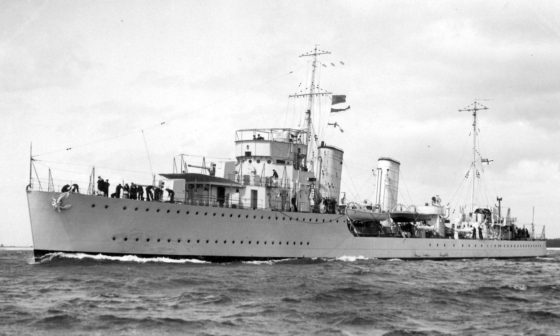
“Made using salt, water and wheat flour (which is rich in protein, vitamins and calories), hardtack could provide modest nutrition for a crew at sea or an army in the field for weeks, even months.”
BEFORE today’s MREs, before C-rations of World War Two, even before corned beef and apricot jam of the Great War’s Western Front, soldiers and sailors could count on receiving one thing in their daily food rations: hardtack.
Sometimes referred to as “sea biscuit,” “ship’s biscuit,” or “molar breakers,” baked flour rations or “hardtack” has been on the menu for soldiers and sailors as far back as ancient times. It was known as dhourra cake to Egyptian mariners and buccellum in the Roman Legions, while King Richard I’s crusaders called it “muslin bisket.” <sic>

The Royal Navy was among the first to mass-produce hardtack. Production began as early as the 1660s. English tars were issued up to a pound of biscuit a day, along with their generous one-gallon beer ration.
Made using salt, water and wheat flour (which is rich in protein, vitamins and calories), hardtack could provide modest nutrition for a crew at sea or an army in the field for weeks, even months.
The secret to making biscuit last so long is to draw out every last trace of moisture. To that end, slabs of hardtack were baked and re-baked as many as four separate times. Once in storage, the biscuits would keep indefinitely, if kept dry. In fact, during the U.S. Civil War, troops were issued with hardtack rations that had been prepared for the army during the Mexican American War 15 years earlier.

At meal times, soldiers and sailors would soak or boil the biscuits in coffee, beer, salt water or just about any liquid on hand. That’s because un-moistened, hardtack was inedible and nearly dense enough to stop a musket ball. Biscuits could also be crushed with rifle butts and boiled into a porridge, fried in a pan, or even just sucked on raw during a long watch. Some sailors in the Royal Navy would make their own improvised coffee using the stuff. This was accomplished by taking a fire-blackened biscuit, grinding it into a fine powder, adding boiling water and drinking it hot with a touch of sugar.
Unless kept bone dry, biscuits would quickly grow moldy and spoil. But even under ideal conditions, they could easily become infested with weevil larvae or maggots, giving rise to another popular hardtack nickname: “worm castles.” Sailors and soldiers alike would remove any parasites by submerging the biscuits in coffee or water and then skimming the critters off when they floated to the surface. Others preferred to simply dim the lights and try to choke down the hard tack, weevils and all.
European armies and navies throughout the 17th, 18th and 19th Centuries literally lived off biscuits. Even after the advent of canned food, which was pioneered by Napoleon’s armies in the early 1800s, soldiers continued to be issued with biscuit or hard tack right up until the First World War.

Interested in sampling a ship’s biscuit or hard tack yourself? You probably have the ingredients in your kitchen right now and are only about 30 minutes away from enjoying your own taste of history (although ‘enjoying’ might be too strong a word). Recipes for hardtack are available from a number of sources online. Here’s one. Bon appetite!
(Originally published on June 28, 2012)










There is a biscuit in the Royal Engineers Museum that a solider used as something to write a letter home…It has his letter on one side and a stamp and a frank on the other…It was so hard it survived the journey home and 100 years!
Brilliant. I love it. Thanks, Nick!
Hi, I don’t think the biscuit you show from Denmark is the oldest known biscuit (a claim also made on Wikipedia). The Maritime Museum in London, England has at least one older, dating from 1784. See here http://www.rmg.co.uk/explore/sea-and-ships/facts/faqs/customs-and-origins/history-of-the-ships-biscuit
Hardtack? I think I’ll stick to Arnotts
Prior to about 1870, hard tack would have been made of a (stone ground) whole grain meal, fermented with sour dough. The whole grain had more nutrition, and the sour dough improved nutrition and reduced lectins. The white flour product after 1875 was cheaper and kept better. Use of baking power/ baking soda was after 1870.
This is a very interesting article. One point though, in the artefact collection of the Royal Geographical Society is a ship’s biscuit which was taken to the Arctic in 1848. It must therefore have been baked before your Danish example.
It’s a useful article. It makes me think a lot too
http://www.biligio.co.kr
We ate a lot of Hardtack during WW 11. We got it from soldiers working on the Mulberry in our little harbor. My granny would soak it and we had it many times for breakfast with an egg and sausage. We loved it.